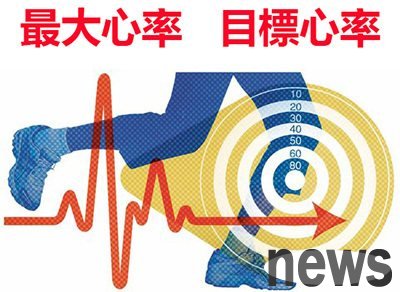I received a new book by Dr. Cai Mingji on the day before yesterday (2021-8-9), and the next day, I published Dr. Cai Mingji’s new book on slimming: Where is the "endocrine disorder" from? . In addition to recommending this book to everyon...

I received a new book by Dr. Cai Mingji on the day before yesterday (2021-8-9), and the next day, I published Dr. Cai Mingji’s new book on slimming: Where is the "endocrine disorder" from? . In addition to recommending this book to everyone, I also tried to answer Dr. Tsai’s question about the source of the term “endocrine disorder”.
Doctor Cai has another topic that aroused my interest in this new book. Its Part 3 is "Assisting the Ideal Body: Sports", and the main title that opens the head is "Wake up!" Extremely tired and sweating and swelling does not mean effective exercise. Near the end, Dr. Cai said: [We need to update an important concept with you: "heartbeat rate" is more suitable as an indicator of sports effects. According to the study of sports physiology, the heart rhythm that can burn fat most effectively is about 60%-80% of the "maximum heart rhythm". The maximum heart rhythm is calculated by formula: maximum heart rhythm = 208 - (0.7 x age)…. 】
There are two quotations in this paragraph that I want to discuss, namely "heartbeat rate" and "maximum heart rhythm".
"Heart Rate" can be reduced to "heart rate", and its English is Heart Rate. "Heart rate" refers to the number of times the heart beats per minute. For example, a heart rate of 60 means that the heart beats 60 times per minute.
"Heart Rhythm" in English is Heart Rhythm, and it refers to the rhythm of heartbeat. The familiar "Heart Arrhythmia" (Heart Arrhythmia or Cardiac Arrhythmia) is the best example of the word "Heart Arrhythmia".
Since "heart rate" and "heart rhythm" pronunciation are the same, it is understandable that they will be interchanged or mixed. However, since I am a little more hairy, I need to first explain why I want to change the "maximum heart rhythm" mentioned by Dr. Cai to "maximum heart rate".

The Maximal Heart Rate is not clearly defined because there has been no medical literature that says what will happen if the heart rate exceeds the "maximal heart rate" (sudden death?). In any case, the general public only needs to know that the "maximum heart rate" decreases with the age of age, and it can be used to set the "Target Heart Rate".
"Target heart rate" refers to "the heart rate at which the individual wants to achieve the sports target." If your sports goal is light, set your Target Heart Rate to around 60% of the Maximum Heart Rate. If your sports goal is sweating, set your target heart rate to around 80% of your Maximum Heart Rate.
There are several different calculation formulas for "maximum heart rate", and the one provided by Dr. Cai [208 - (0.7 x age)] is commonly known as Tanaka Formula, because it was proposed by Tanaka, Monahan, and Seals. Please see the Age-predicted maximum heart rate revisited in 2001.
However, the most commonly used formula is not Tanaka Formula, but Fox Formula. All major U.S. medical institutions and organizations use this formula, including CDC, the Heart Association, Mayor Clinic, and Johns Hopkins University.
Fox Formula was proposed by Fox, Naughton, and Haskell. Please see the Physical activity and the prevention of coronary heart disease published in 1971.
Fox Formula is also simpler than Tanaka Formula, you can get it by reducing the last year with 220. For example, a person at the age of 60 has a maximum heart rate of 220 – 60 = 160, and his "target heart rate" is about 96 to 128 (96 is light exercise, 128 is sweating and sweating and sweating and sweating and sweating and sweating and sweating and sweating and sweating and sweating and sweating and sweating and sweating and sweating and sweating and sweating and sweating and sweating and sweating and sweating and sweating and sweating and sweating and sweating and sweating and sweating and sweating and sweating and sweating and sweating and sweating and sweating and sweating and sweating and sweating and sweating and flowing and flowing and sweating and flowing and flowing and sweating and flowing and flowing and sweating and flowing are maximum heart rate of 80% (160*0.8=128)".
No matter which formula is used to calculate the "maximum heart rate", since each person's physical condition is different, it can still adjust about 10%. In other words, it is appropriate to reduce the calculated "target heart rate" by a few points (for example, 5).
Of course, I often hear people say, "Oh! Just exercise, why bother to calculate the more heartbeat." I can only respect this, and this is your goal.
Original text: Maximum heart rate, Target heart rate: Some eyebrow angles of the movement indicator